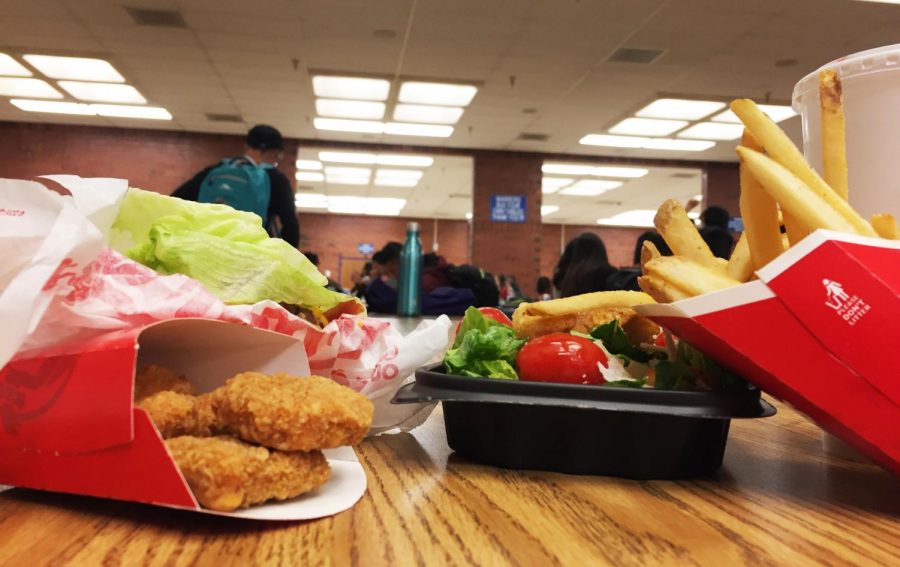Finding a balanced diet challenges teens
There are many options available for teenager to consume – some healthier than others. This picture depicts the two opposing options, one healthy and the other decidedly not. For students, it’s often cheaper to eat fast food over fresh foods.
October 2, 2018
Too much, too little, just right. The individual stories of high school eating are the equivalent of a live-action Goldilocks and the Three Bears. With some students counting every calorie and some consuming every calorie, one big mystery remains: where, oh, where can that middle bowl be found?
Just as Goldilocks cannot eat the soup from the two extremes, the reaches of what a teenager can eat are determined by their diet.
Samantha Costa, health editor of USNews, wrote, “What kind of food a teen eats – plus how much and when – affects teens’ attention, memory and ability to focus.” This is not a new revelation, teenagers have been advised to keep a good diet for decades. The advice just doesn’t seem to be sinking in.
Junior Kailee Anderson said, “There are some people who you know are really concerned about their diet; who don’t eat over ‘x’ amount of calories every day and are very careful. And there are others who just don’t care, like me. I’m one of those people.”
Every teenager can identify which bed they fall on, which bowl of soup they eat from, falling into two of the three options. Whether they eat too much or too little, or they are hopping between the two, it seems that most teenagers tend to lean towards malnourishment.
Professor at Yale University, Susan Sutherland Airone published “Malnutrition, faulty or poor nutrition, can be due to the inadequate intake of nutrients or the overconsumption of foods in improper amounts. America is plagued with both extremes plus a few unique problems in-between.”
Students tend to lean towards an unhealthy diet, whether it be by eating too much or too little or by switching between the two.
Senior Braden Henson is an example of one who hops between the bowls. When asked whether he believed he ate too little or too much he replied that it depended whether he was wrestling or not. Henson explained that during the wrestling season, he didn’t eat enough and off-season he ate more than enough.
In reality, the middle bowl has already been found. The Committee on Nutrition of the Academy of Pediatrics published the exact recipe.
“A well-rounded diet should deliver sufficient amounts of all the essential vitamins and minerals. Adolescents tend to most often fall short of their daily quotas of calcium, iron, zinc, and vitamin D… Boys require an average of 2,800 calories per day. Girls require an average of 2,200 calories per day.”
It is simple enough, but the stakes could not be higher. For unlike Goldilocks, students are not just burning our tongues when they try the wrong soup, they are endangering our future and their health.





